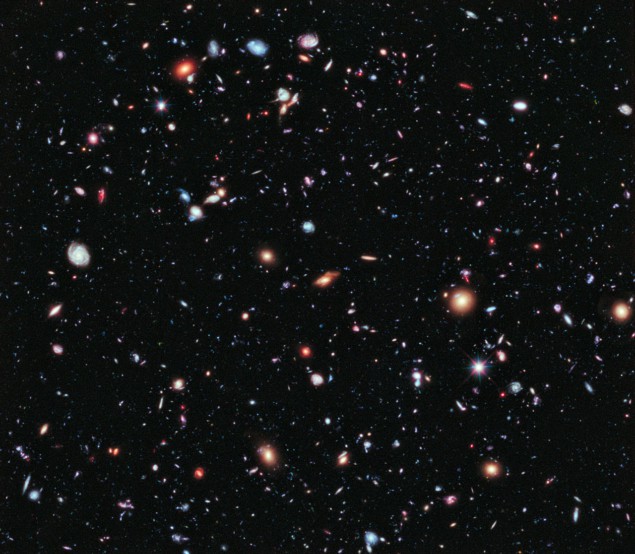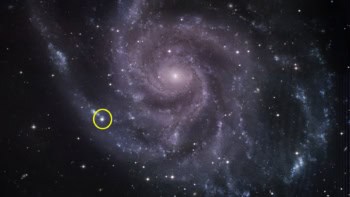The James Webb Space Telescope (JWST) is scheduled to launch on 25 December. To mark the event, Physics World is publishing a series of blog posts on the telescope’s technological innovations and scientific missions. This post is the sixth in the series. Read the first here.

One of the James Webb Space Telescope’s (JWST’s) scientific tasks will be to revisit the so-called Hubble deep fields. These famous images are the product of the Hubble Space Telescope’s most penetrating gazes into our universe’s past, recording light emitted up to 13.2 billion years ago and redshifted by as much as a factor of 12 as the expansion of the universe carries these old, distant galaxies away from us. Thanks to its larger mirror (6.5 m in diameter compared to Hubble’s 2.4 m), the JWST will be able to see even further back in time, routinely imaging objects at redshift 15 and occasionally seeing some at redshifts between 25 and 30, according to senior project scientist John Mather.
Objects at these redshifts will appear as they existed up to 13.5 billion years ago, just 300 million years after the Big Bang. Any galaxies among them would be some of the very first to exist, which could make them hard to spot: the currently favoured model of galaxy formation involves smaller galaxies colliding and merging with each other to form larger ones, meaning that the earliest galaxies are predicted to be small and faint. Nevertheless, Mather is confident that imaging them is within the JWST’s reach. “They’re not expected to be common, they may be a little hard to find, and we may need some luck to find them, but we’ll certainly be looking,” he says.
Seeing the first galaxies is only one part of the equation. Astronomers also want to understand galaxies’ full life-cycle, from their formation all the way through to the present day. The JWST will have a role here, too, making observations of galaxies throughout time that will help build a more complete picture of how elliptical and spiral galaxies develop and how star formation spurs their physical and chemical evolution. The telescope will also explore the role of dark matter in bringing galaxies together, and the effects of feedback from active black holes in controlling star formation.

The ten-billion-dollar gamble: The JWST’s micro-scale windows on the universe
With so many topics to investigate, Mather says the hardest part for astronomers may be waiting for mission scientists to get to grips with the telescope’s quirks. “The Hubble deep fields will be hard to do better, because we know from Hubble that when you try to take lots of time exposures and average them together, things can go wrong,” he tells Physics World. “We have to learn what those things might be before we invest the amount of time in something so precious.”
Next: Why the JWST’s delays were a boon for exoplanet science



